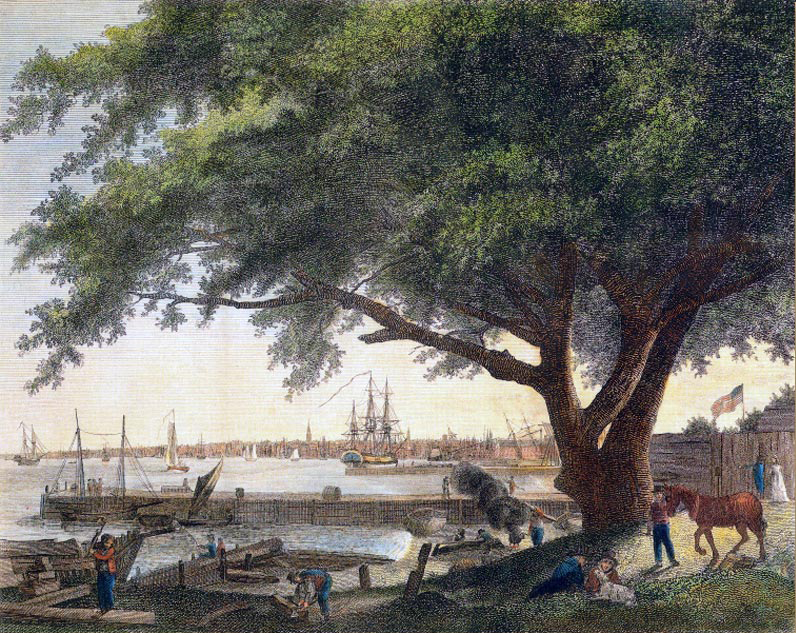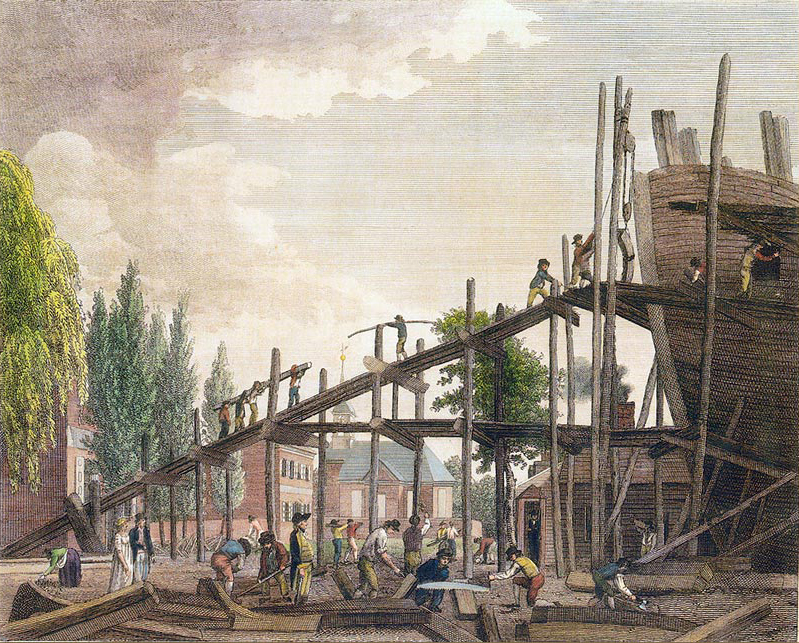Port of Philadelphia
“The City & Port of Philadelphia, on the River Delaware from Kensington”
William Birch
Above and below: courtesy Independence National Historical Park, Karie Diethorn, Chief Curator, and with the kind assistance of library technician Andrea Ashby Leraris.[1]The prints in the INHP collection, which originated in various portfolio sets that preceded Birch’s book, The City of Philadelphia, in the State of Pennsylvania North America, as it appeared in … Continue reading
This view, William Birch wrote in the introduction to his book of original prints, titled The City of Philadelphia . . . as it appeared in the Year 1800, “represents, with the city at large a busy preparation for commerce.” The tree that dominates the scene may have been the one beneath which William Penn consummated his peace treaty with the Lenni Lenape Indians. Kensington, in the foreground, was one of the two shipbuilding areas at Philadelphia. The other was at Humphry’s Shipyard.
Humphrey’s Shipyard
The Swedish Church in the background, known as Gloria Dei or Old Swedes’, was begun in 1698. The keel for the frigate Philadelphia was laid exactly a century later at Humphrey’s shipyard in Southwark. It was built by the Commonwealth of Pennsylvania, with financial assistance from many of the citizens whose city had been the new nation’s capital for ten years and was feared to be vulnerable to foreign capture and occupation during the war between France and England. The danger was past by 1800, but the Philadelphia was destined to play a major role in the First Barbary War of 1801-1805, and in the creation of America’s first military hero, Stephen Decatur, Jr.
Experience the Lewis and Clark Trail
The Lewis and Clark Trail Experience—our sister site at lewisandclark.travel—connects the world to people and places on the Lewis and Clark Trail.
Plan a trip related to Port and Shipyard:

Notes
| ↑1 | The prints in the INHP collection, which originated in various portfolio sets that preceded Birch’s book, The City of Philadelphia, in the State of Pennsylvania North America, as it appeared in the Year 1800, measure approximately 18 by 14½ inches. |
|---|


